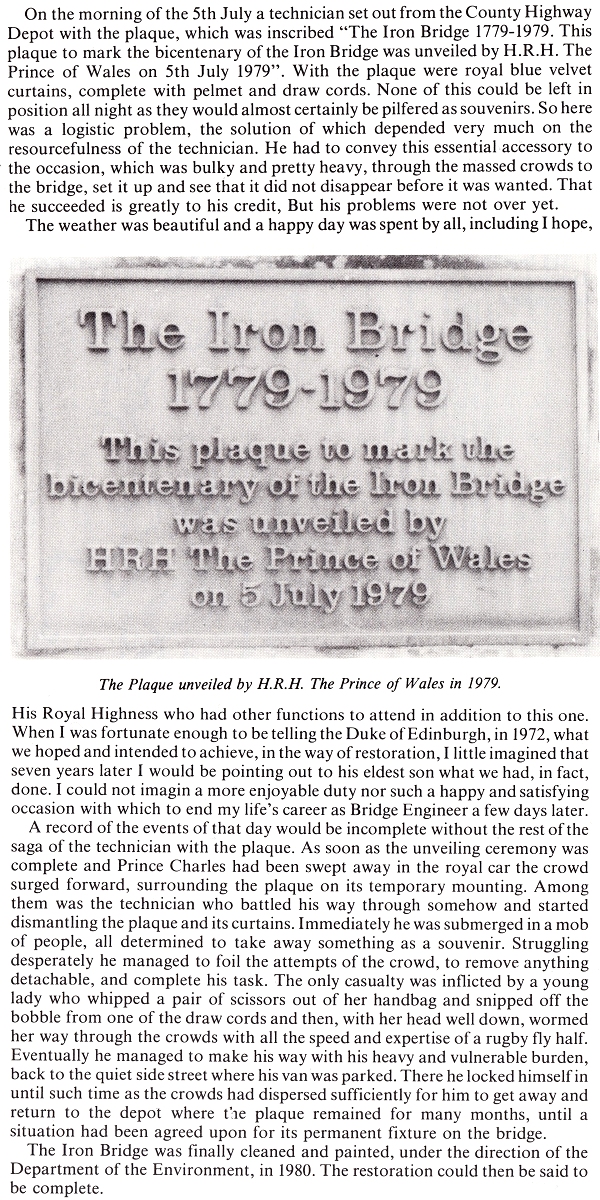Forgotten Weapons
Published on 11 May 2019Preorders now open for my book, “Chassepot to FAMAS: French Military Rifles 1866-2016”! Get your copy here:
https://www.kickstarter.com/projects/…
Knights Armament introduced their “Assault Machine Gun” a couple years ago, and I had a chance to take both versions (5.56mm and 7.62mm) out to the range recently. The gun is the spiritual descendant of the Stoner 63, but is more directly made on Eugene Stoner’s Model 86 light machine gun. It utilizes the constant recoil principle, with the bolt never actually contacting the rear of the receiver during the cycling process. This results in recoil being felt by the shooter as a continuous steady force instead of a rapid series of impacts and that makes it tremendously controllable. Not surprisingly, these guns are already being sold to military and security organizations worldwide…
http://www.patreon.com/ForgottenWeapons
Cool Forgotten Weapons merch! http://shop.bbtv.com/collections/forg…
Contact:
Forgotten Weapons
PO Box 87647
Tucson, AZ 85754
July 16, 2019
Knight’s Assault Machine Guns at the Range
July 13, 2019
Local Boy Saves Nation: The Australian Owen SMG
Forgotten Weapons
Published on 8 May 2019Preorders now open for my book, Chassepot to FAMAS: French Military Rifles 1866-2016! Get your copy here: https://www.kickstarter.com/projects/…
http://www.patreon.com/ForgottenWeapons
Cool Forgotten Weapons merch! http://shop.bbtv.com/collections/forg…
The Owen submachine gun is one of the ugliest SMGs ever designed, and yet also one of the most beloved by its users. The original basis for the gun was a .22 rimfire submachine gun designed by 23-year-old Australian Evelyn Owen. That prototype was found by his neighbor Vincent Wardell after Owen left for military service. Wardell was the manager of Lysaght Works, an engineering firm, and thought that the gun might be the basis for a useful military SMG. As it turned out, he was right – it became the standard SMG of The Australian military through World War Two and the Korean War, and was one of the best such guns of that period. For more details on the history of the Owen, see my full article:
https://www.forgottenweapons.com/subm…
Thanks to Movie Armament Group in Toronto for giving me the opportunity to bring you this video! Check out MAG on Instagram: https://instagram.com/moviearmamentsg…
Contact:
Forgotten Weapons
PO Box 87647
Tucson, AZ 85754
July 11, 2019
From Aerobatics to Terror Bombing | Between 2 Wars | 1927 Part 2 of 2
TimeGhost History
Published on 10 Jul 2019With thousands of planes left over from World War One, hobby pilots and entrepreneurs set out to create the modern airline industry. Charles Lindbergh, Amelia Earhart, and many more set record after record, while airplane manufacturers start the creation of passenger, freight planes, and a new generation of aerial weapons.
Join us on Patreon: https://www.patreon.com/TimeGhostHistory
Hosted by: Indy Neidell
Written by: Joram Appel and Spartacus Olsson
Directed and Produced by: Astrid Deinhard and Spartacus Olsson
Executive Producers: Bodo Rittenauer, Astrid Deinhard, Indy Neidell, Spartacus Olsson
Creative Producer : Joram Appel
Post Production Director: Wieke Kapteijns
Research by: Joram Appel
Edited by: Daniel WeissArchive by Reuters/Screenocean https://www.screenocean.com
A TimeGhost chronological documentary produced by OnLion Entertainment GmbH
July 10, 2019
An Overview of the Pinfire Revolver System
Forgotten Weapons
Published on 4 May 2019(Video reuploaded to removed an allegedly copyrighted still image)
http://www.patreon.com/ForgottenWeapons
Cool Forgotten Weapons merch! http://shop.bbtv.com/collections/forg…The pinfire system was an early cartridge type which saw widespread use in Europe, but was not widely adopted in the United States. First invented by a French designer named Pauly, it was made commercially feasible by Casimir Lefacheaux. It was Casimir’s son Eugene, however, who took the pinfire cartridge to its full potential, garnering a French military contract in the 1850s and building Lefacheaux into one of the largest French/Belgian non-government arms manufacturers in the mid 1800s.
Todays we are looking at an assortment of pinfire revolvers, to get some basic idea for the sort of variety that was made over the decades. Small to large, plain to fancy, and with all manner of quirky details (like folding bayonets and Lefacheaux’s triple-action fire control system).
Contact:
Forgotten Weapons
PO Box 87647
Tucson, AZ 85754
July 7, 2019
Granatbuchse GrB-39 Antitank Rifle
Forgotten Weapons
Published on 29 Aug 2015http://www.patreon.com/ForgottenWeapons
Hammer price: $13,000
Like most countries, Germany had a standard-issue antitank rifle when World War II began — the Panzerbuchse 39. It fired an 8 x 94mm cartridge with a small very high velocity armor-piercing bullet. And like the other AT rifles from the 1930s, the PzB-39 became obsolete quickly as tank armor improved during the war. However, while most countries simply scrapped their antitank rifles, the Germans opted instead to convert the guns into dedicated grenade launchers.
Because the PzB-39 was already designed for a very high pressure cartridge, it was ideally suited to handle the stresses of firing large anti-tank grenades. Rather than relying on simple kinetic energy to penetrate, the grenades could use shaped charge technology to be vastly more effective than AP bullets.
In converting the PzB-39 into the GrB-39, the barrels were cut down, grenade launching cups attached to the muzzles, new sights designed for grenade use, bipods lengthened, and the folding stocks were fixed in place. Most of the PzB-39 rifles in service were subject to these modifications, and the resulting GrB-39 guns were able to be reasonably effective through the end of the war.
July 6, 2019
The Iron Bridge in Shropshire
Roger Henry sent along this information on the most recent restoration of the world’s oldest iron bridge near Coalbrookdale:

The Iron Bridge across the River Severn, completed in 1779. The first major bridge to be made of iron.
Photo by shirokazan via Wikimedia Commons.
Wikipedia says:
The Iron Bridge is a bridge that crosses the River Severn in Shropshire, England. Opened in 1781, it was the first major bridge in the world to be made of cast iron, and was greatly celebrated after construction owing to its use of the new material.
In 1934 it was designated a Scheduled Ancient Monument and closed to vehicular traffic. Tolls for pedestrians were collected until 1950, when ownership of the bridge was transferred to Shropshire County Council. It now belongs to Telford and Wrekin Borough Council. The bridge, the adjacent settlement of Ironbridge and the Ironbridge Gorge form the UNESCO Ironbridge Gorge World Heritage Site. The bridge is a Grade I listed building, and a waypoint on the South Telford Heritage Trail.
Anthony Blackwall, who was the Shropshire County Bridgemaster, recounts the 1979 celebrations in “Historic Bridges of Shropshire”, Shropshire Libraries, 1985:
The most recent restoration was completed late in 2018:
The bridge, the first of its kind, was closed for a year after surveyors found cracks and stresses in its historic cast ironwork.
English Heritage launched a £3.6 million programme of repairs in autumn of 2017.
Kate Mavor, the charity’s CEO, came to the gorge to get a first-hand look at the historic bridge restored, and spoke of her pride.
“This is the first English Heritage site I remember coming to when I was about 11, and now it looks much the same as it did then.
“This is the first time I’ve seen it refurbished and I think it sits very nicely in the gorge, and with the red paint it will especially look good in autumn colours.
“I’ve been following the repairs closely since they began, it is an extraordinary project.
“The gorge is a world heritage site, the bridge was the first of its kind and it’s been there since 1779.
“It has survived a number of pernicious influences including an earthquake.
“We’re very proud of what we’ve been able to do here because it’s been unlike any other project of ours.
“We’re very grateful to everyone that has supported the project.
“The amazing response we had to English Heritage’s first ever crowdfunding campaign was fantastic too.”
Kate said that the surveys carried out before the project started revealed that the bridge had originally been painted a deep red, unlike the recognisable black or grey layer of recent years.
July 4, 2019
Gyrojet Carbine, Mark 1 Model B
Forgotten Weapons
Published on 27 Aug 2015http://www.patreon.com/ForgottenWeapons
Hammer price: $3,000
The Gyrojet was one of the more creative and one of the most futuristic firearms innovations of the last few decades – unfortunately it wasn’t able to prove sustainable on the market.
The idea was to use burning rocket fuel to launch projectiles, instead of pressurized gas. The advantage was that without the huge pressure of standard cartridges, a rocket-firing gun could be made far lighter and cheaper, as it had no need to contain pressure. The rockets would accelerate down the barrel as their fuel burned (and the 4 rocket jets would be angled to put a spin on the projectile for accuracy), and the weapon would actually have the most kinetic energy at something like 20 yards downrange, when the fuel was expended.
A decent number of Gyrojet handguns were made and sold (mostly as curiosities), but intrinsic accuracy problems prevented them from ever being taken seriously as weapons. The company behind the guns (MB Associates) went out of business shortly, unable to fully exploit their full range of ideas. One of those ideas was a carbine variant of the gun. A few hundred were made in two different models, and we have the chance today to take a look at one of the Mark 1 Model B sporter-style carbines.
July 3, 2019
Tank Chats #51 TANKFEST 2017 | The Tank Museum
The Tank Museum
Published on 25 May 2018At TANKFEST 2017, the Musée des Blindés brought their unique Saint Chamond tank, which sat alongside the Museum’s replica Mark IV and A7V. David Fletcher took the opportunity to talk about the three First World War vehicles as they stood side-by-side.
Support the work of The Tank Museum on Patreon: ► https://www.patreon.com/tankmuseum
Or donate http://tankmuseum.org/support-us/donateVisit The Tank Museum SHOP: ►https://tankmuseumshop.org/
Twitter: ► https://twitter.com/TankMuseum
Tiger Tank Blog: ► http://blog.tiger-tank.com/
Tank 100 First World War Centenary Blog: ► http://tank100.com/ #tankmuseum #tanks
July 1, 2019
Very Early Mars Pistol #4
Forgotten Weapons
Published on 17 Apr 2015Sold for $46,000.
Until the midle of the 20th century, the most powerful automatic pistol made was Sir Hugh Gabbett-Fairfax’s Mars pistol. With the .45 caliber version approaching the energy of a .45 Winchester Magnum, it was quite the accomplishment for a gun designed initially in 1898! Well, RIA has a very early example of the Mars – serial number 4 – coming up for sale. This gun (chambered for the .360 Mars cartridge) has a number of features that differ from the more “typical” Mars pistols (all 80 or so that were ultimately made). These include a very long barrel, a tangent-style rear sight, and a 3-lug bolt instead of the standard 4-lug type. A very cool pistol to have a look at!
June 30, 2019
QotD: The humble dishwasher
Even for consumers who value flash more than I do, I’m not sure anyone can turn the dishwasher into a sexy appliance. The reason the dishwasher gets so little attention is not that no one has thought it through carefully enough; the problem is that the dishwasher already works too well.
Dishwasher technology is already pretty good. Yes, we haggle over which things should be loaded where. And then we close the door, and some time later, open it again to find our dishes clean. It’s a miracle. Miracles are not ordinarily subject to major technical advances.
But there’s another sense in which dishwashers are too good to be made sexy, a more important one: Dishwashers do the whole job of, you know, washing dishes. There is no scope for the chef’s skill. Your refrigerator holds your culinary creations as they await unveiling; your range midwifes the moment of transformation under your careful control and with your vigilance. Even those who don’t spent a lot of time putting fabulous meals together often entertain extensive fantasies about being the sort of person who does. And express those fantasies through a $10,000 steel box.
No one fantasizes about being the sort of person who puts plates away. And because even basic dishwashers are so efficient, they kill any fantasies we might develop about buying a lavish model so that we can be known for our sparkling-clean tableware. The dishwasher offers us many hours of extra leisure, but no scope for imagination. And so after the argument is over, and the dishes are put away, it retreats to the back of our mind. It can stay there.
Megan McArdle, “A $2,000 Dishwasher Will Never Impress Me”, Bloomberg View, 2017-05-25.
June 29, 2019
June 27, 2019
Tank Chats #50 Ha-Go | The Tank Museum
The Tank Museum
Published on 18 May 2018The Type 95 Ha-Go tank was produced by the Imperial Japanese Army in 1935 and used throughout the Second World War.
The Tank Museum’s Type 95 was captured in Malaya and was examined in Calcutta before being sent to Britain. Surviving Japanese tanks from the Second World War are extremely rare.
Support the work of The Tank Museum on Patreon: ► https://www.patreon.com/tankmuseum
Or donate http://tankmuseum.org/support-us/donateVisit The Tank Museum SHOP: ►https://tankmuseumshop.org/
Twitter: ► https://twitter.com/TankMuseum
Tiger Tank Blog: ► http://blog.tiger-tank.com/
Tank 100 First World War Centenary Blog: ► http://tank100.com/ #tankmuseum #tanks
June 26, 2019
“… what’s happening now is even better than Apollo”
At Popular Mechanics, Joe Pappalardo reminds us that the 50th anniversary of the Apollo 11 lunar landing is coming up next month, but that current developments in space are worth celebrating too:

Astronaut Buzz Aldrin, lunar module pilot, stands on the surface of the moon near the leg of the lunar module, Eagle, during the Apollo 11 moonwalk. Astronaut Neil Armstrong, mission commander, took this photograph with a 70mm lunar surface camera. While Armstrong and Aldrin descended in the lunar module to explore the Sea of Tranquility, astronaut Michael Collins, command module pilot, remained in lunar orbit with the Command and Service Module, Columbia.
Apollo was born of Cold War desperation: a political exercise that paid enormous scientific and technological dividends. After the launch of Sputnik in 1957, it became vital to beat the Soviet Union to the Moon, a geopolitical urge that created an enormous budgetary effort.
The problem with politically motivated — well, anything — is that the faucet of support can be closed just as quickly as it opened. It happened to Apollo, as follow on missions were cancelled and the focus shifted to a reusable craft to service low-earth orbit. This pattern of shifting space priorities and strategies whipsawed NASA, most noticeably when the Obama administration’s cancellation of the Bush-era Constellation moon program in 2010.
But multiple private companies pursuing their niches in space have an obvious redundancy. While companies may rise and fall, the very nature of a commercial effort isn’t as dependent on government funding. If it’s worth doing, especially if it makes money, space industry will endure political shifts. The objectives of a well-run company do not change that much every four years.
That leaves today’s NASA with a choice: Do it themselves and control everything (the traditional way), or fund private companies to develop the tech the agency needs and then allow them to sell their services to any nation, company, or individual (the new way). With those services on the open market, NASA would be one of many customers for a new U.S.-based space economy.
This debate is boiling over right now. The ongoing effort to return to the moon, called Artemis (after Apollo’s sister), is becoming a lesson in the advantages of the commercial model.
[…]
If only investment guaranteed results. For those who miss bloated, government-run spaceflight, there is already a NASA spacecraft mired in the old ways of thinking. The feds have sunk a lot of money into the Space Launch System, a mega-rocket built to NASA specs for deep space missions. It was supposed to fly in 2017, but we’ll be lucky to see a first flight in 2020 — and it busted the $9.7 billion estimated budget, now costing about $12 billion.
But something happened during these SLS delays: the commercial space industry started delivering on its promises. Most visibly, private firms have been delivering supplies to the International Space Station for years and (hopefully soon) will ferry astronauts as well. Blue Origin and SpaceX has started development of crewed spacecraft able to reach to the moon and Mars. Elon Musk even sold a moon trip to a Japanese billionaire.
June 25, 2019
Mars Automatic Pistols
Forgotten Weapons
Published on 1 Mar 2015Sold for:
$74,750 (.45 cal example)
$40,250 (8.5mm example)The Mars pistol was designed by Sir Hugh Gabbett-Fairfax in England in 1898, and only 81 were produced by the time manufacturing ended in 1907. These pistols were chambered for several different cartridges, all of them tremendously powerful for the day (and really not equaled by another self-loading pistol until the Automag).
Cool Forgotten Weapons Merch! http://shop.bbtv.com/collections/forg…
Theme music by Dylan Benson – http://dbproductioncompany.webs.com
I first heard of these pistols in one of L. Neil Smith’s first SF novels, and they sounded so over-the-top that I assumed he’d made them up for the story. This is a fascinating piece of hand artillery that I’d be terrified to have pointed at me (but I’d probably be nearly as terrified to shoot).















